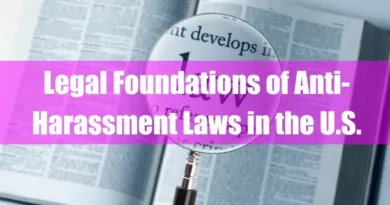I. What is The Protect from Exploitation Act (PROTECT) 2003
The Protect From Exploitation Act (PROTECT) is a US law specifically aimed at combating child sexual abuse and exploitation. It was enacted in 2003 https://www.congress.gov/bill/108th-congress/senate-bill/151. The PROTECT Act of 2003, also known as the Prosecutorial Remedies and Other Tools to End the Exploitation of Children Today Act, strengthens law enforcement’s ability to prevent, investigate, and prosecute crimes against children. It expands penalties for child sexual abuse and exploitation, allows for lifetime supervision of released sex offenders, and tackles the online spread of child pornography.
Here are some key things to know about the PROTECT Act:
Purpose: The law’s primary goal is to strengthen legal and investigative tools for law enforcement to:
- Prevent child sexual abuse
- Investigate and prosecute related crimes
- Deter potential offenders
Measures: The PROTECT Act introduced several measures to achieve this aim, including:
- Enhanced sentencing for child sexual abuse crimes
- Increased funding for investigations and programs to combat child exploitation
Let’s discuss this Act in detail in the following sections of the article.
II. Scope, Historical Context, and Overview of PROTECT

A. The Scope of Child Sexual Abuse and Exploitation in the US
Child sexual abuse and exploitation (CSAE) remain a devastating reality in the United States. While obtaining precise figures is challenging due to underreporting, available data paints a grim picture.
Prevalence: Studies reveal a wide range of estimated prevalence rates for CSAE. The National Survey of Children’s Exposure to Violence (NatSCEV) suggests that approximately 28% of adolescents aged 14-17 report experiencing sexual violence in their lifetime. Other research indicates lifetime prevalence rates ranging from 8% to 40%.
Reporting: Underreporting is a significant barrier to understanding the true scope of CSAE. Fear, shame, and pressure from perpetrators are common reasons why children don’t disclose abuse. The Children’s Bureau reports that in 2018, an estimated 4.3 million referrals involving child maltreatment were received by Child Protective Services (CPS) agencies across the country. However, only about 7% of these cases involved sexual abuse.
Victims: Sadly, CSAE affects children of all genders, races, ethnicities, and socioeconomic backgrounds. While most perpetrators are known to the victim, a growing concern is online exploitation, where abusers can target children anonymously.
Impact on Victims: The consequences of CSAE are severe and long-lasting. Victims may experience a range of physical, emotional, and psychological problems, including:
- Post-traumatic stress disorder (PTSD)
- Depression
- Anxiety
- Self-harm
- Substance abuse
- Difficulty forming healthy relationships
The effects can extend into adulthood, impacting a victim’s ability to function in various aspects of life.
B. The Need for Legislative Action: Historical Context
The pervasiveness of CSAE has historically driven legislative efforts to protect children. However, the landscape of child exploitation has evolved, demanding a continuous response from policymakers. Here’s a brief historical context:
- Early Efforts: Early attempts to address child sexual abuse primarily focused on physical abuse within the family. However, as awareness grew about non-contact abuse and the exploitation of children through pornography, the need for more specific legislation became evident.
- The Rise of Technology and New Challenges: The explosion of the internet and the proliferation of digital communication channels introduced new avenues for child exploitation. The ease of access to child pornography and the ability for perpetrators to connect with victims anonymously presented significant challenges for law enforcement.
- Limitations of Existing Laws: Before the PROTECT Act, existing laws lacked the scope and tools needed to combat online child exploitation effectively. Legacy laws often focused on physical abuse or the distribution of physical child pornography, leaving gaps in addressing online exploitation and its complexities.
C. The PROTECT Act: An Overview
In response to these growing concerns, the PROTECT Act (The Protect From Exploitation of Children Act) was enacted in 2003. This landmark legislation aimed to address several critical areas:
- Strengthening Law Enforcement Capabilities: Providing law enforcement with enhanced investigative tools and resources to combat online child exploitation.
- Increasing Penalties for Offenders: Imposing stricter sentencing for child sexual abuse crimes.
- Prevention and Awareness: Supporting programs aimed at preventing child exploitation and raising public awareness about the issue.
The PROTECT Act marked a significant step forward in the fight against CSAE by providing a robust legal framework and much-needed resources for law enforcement and child protection efforts.
Also, read:
- CRC 1989 – Convention on the Rights of the Child
- ILO Conventions: The International Labour Organization
III. Legislative Framework of the PROTECT Act

The PROTECT Act introduced a range of measures aimed at strengthening the legal framework and equipping law enforcement with the tools needed to combat child sexual abuse and exploitation (CSAE). Here’s a breakdown of its key provisions:
A. Key Provisions of the Act
1. Enhanced Sentencing for Child Sexual Abuse Crimes
The PROTECT Act significantly increased penalties for various child sexual abuse offenses. Here are some specific examples:
- Non-Family Member Child Abduction: The minimum prison sentence for non-family member child abduction was increased from 5 years to 20 years.
- Sexual Exploitation of Children and Child Pornography: The minimum sentence for a first offense involving the use of a minor to produce child pornography was increased to 15 to 30 years.
- “Two Strikes” Provision: The Act established a “two strikes” provision for certain serious sexual abuse offenses against children. This provision mandates life imprisonment for a second offense.
- Traveling to Meet a Minor for Sex: The PROTECT Act criminalized traveling across state lines or internationally to engage in illicit sexual conduct with a minor.
These increased penalties aimed to deter potential offenders and ensure harsher punishments for those convicted of CSAE crimes.
2. Investigative Tools for Law Enforcement

The PROTECT Act recognized the challenges law enforcement faced in investigating online child exploitation activities. To bridge these gaps, the Act provided new investigative tools, including:
- Subpoena Authority: Law enforcement was granted the authority to obtain subscriber information from Internet service providers (ISPs) through subpoenas, facilitating the identification of individuals suspected of uploading or distributing child pornography.
- Search Warrants for Electronic Evidence: The Act streamlined the process for obtaining search warrants for electronic evidence related to child exploitation crimes. This allowed for quicker access to digital devices containing potential evidence.
- International Cooperation: The Act authorized increased international cooperation in investigations involving child sexual abuse. This included sharing information and facilitating joint operations with foreign law enforcement agencies.
These investigative tools empowered law enforcement agencies to conduct more effective investigations and gather critical evidence in CSAE cases.
3. Measures to Prevent Child Exploitation
The PROTECT Act wasn’t solely focused on punishment; it also addressed prevention through funding for programs aimed at:
- Internet Safety Initiatives: The Act allocated resources to develop and implement internet safety programs that educate children and parents about the dangers of online exploitation and strategies for safe online practices.
- Training for Law Enforcement and Professionals: Funding was provided for training law enforcement officers, prosecutors, and child protection professionals on investigating and prosecuting child sexual abuse crimes. This included training on the latest technologies used by perpetrators and best practices for victim support.
- Public Awareness Campaigns: The Act supported public awareness campaigns aimed at educating communities about child sexual abuse and encouraging reporting of suspected cases.
The PROTECT Act funded preventative measures to reduce the incidence of CSAE and empower communities to protect children better.
Also, read:
IV. The Impact of the PROTECT Act on Law Enforcement

The PROTECT Act significantly impacted law enforcement’s ability to combat child sexual abuse and exploitation (CSAE). Here’s a closer look at its effects:
A. Strengthening Law Enforcement Capabilities
The Act provided critical tools and resources that enhanced law enforcement’s capacity to investigate and prosecute CSAE crimes. Here’s how:
- Improved Investigative Techniques: The ability to obtain subscriber information from ISPs and streamlined search warrant procedures allowed for quicker identification of suspects and gathering of electronic evidence. This facilitated faster investigations and stronger cases for prosecution.
- Enhanced Tracking of Online Exploitation: Law enforcement agencies gained new tools to track online activity associated with child exploitation. This included monitoring online forums and chat rooms frequented by perpetrators.
- Focus on Digital Forensics: The Act’s emphasis on electronic evidence led to increased investment in digital forensics capabilities. This allowed for the extraction and analysis of digital evidence from computers, phones, and other devices used by offenders.
These advancements empowered law enforcement to conduct more comprehensive investigations and build stronger cases against perpetrators.
B. Increased Resources and Funding
The PROTECT Act allocated significant funding to enhance law enforcement’s capacity to tackle CSAE. These resources included:
- Training Programs: Funding was directed towards training law enforcement personnel on investigating online child exploitation, including advanced techniques for digital forensics and undercover operations.
- Cybercrime Units: The Act supported creating and expanding specialized cybercrime units within law enforcement agencies dedicated to investigating CSAE cases.
- Technology and Equipment: Resources were allocated to acquire advanced technology and equipment needed for digital forensic analysis and online investigations.
This additional funding helped law enforcement agencies develop specialized expertise and acquire the necessary tools to combat online child exploitation effectively.
C. Collaboration and Coordination

The PROTECT Act fostered greater collaboration and coordination between various stakeholders involved in combating CSAE. This included:
- Inter-Agency Cooperation: The Act encouraged collaboration between federal, state, and local law enforcement agencies. This facilitated information sharing and coordinated investigations across jurisdictions.
- Public-Private Partnerships: The Act supported collaboration between law enforcement agencies and internet service providers (ISPs). This collaboration involved developing protocols for reporting suspected child exploitation activities on online platforms.
- International Cooperation: The Act authorized increased international cooperation to investigate and prosecute transnational CSAE crimes. This included information sharing and joint operations with foreign law enforcement agencies.
Enhanced collaboration across diverse entities helped to create a more unified front against online child exploitation.
D. Challenges and Implementation Issues
Despite its positive impact, implementing the PROTECT Act has presented challenges for law enforcement:
- Resource Constraints: While the Act provided funding, it may not be enough to address the ever-evolving nature of online child exploitation fully. Law enforcement agencies may require ongoing funding to keep pace with technological advancements used by perpetrators.
- Encryption Challenges: The increasing use of encryption by online platforms can hinder law enforcement’s ability to access crucial evidence during investigations. Balancing public safety concerns with user privacy remains an ongoing debate.
- Global Scope of the Problem: Child exploitation often involves perpetrators and victims across international borders. Effective international cooperation and coordination are critical for successful investigations and prosecutions, which can be complex.
These challenges highlight the ongoing need for lawmakers and law enforcement agencies to adapt and innovate in the face of evolving technologies and criminal tactics.
Also, read:
- Age Discrimination in Employment Act (ADEA) of 1967
- GINA – Genetic Information Non-discrimination Act 2008
V. The PROTECT Act and Child Protection Programs

The PROTECT Act recognized that combating child sexual abuse and exploitation (CSAE) goes beyond law enforcement. It also addressed prevention through funding for critical child protection programs.
A. Funding for Prevention Programs
The PROTECT Act allocated resources to support various prevention programs aimed at:
- Internet Safety Education: Funding was directed toward developing and implementing educational programs for children, parents, and educators. These programs aim to raise awareness about online safety, teach children how to identify and avoid online dangers and educate parents on monitoring their children’s online activity.
- Cyberbullying Prevention: The Act also supported initiatives to address cyberbullying, which can be a gateway to online exploitation. These programs focused on teaching children responsible online behavior and creating safe online environments.
- Bystander Intervention Training: Funding was allocated for programs that train children and bystanders to recognize the signs of potential online exploitation and intervene appropriately. This could involve reporting suspicious activity to a trusted adult or seeking help from online safety resources.
By investing in prevention programs, the PROTECT Act aimed to empower children, parents, and communities to play a proactive role in protecting children from online exploitation.
B. Public Awareness Campaigns
The PROTECT Act recognized the importance of raising public awareness about CSAE. Here’s how funding was used:
- National Campaigns: The Act supported developing and disseminating national public awareness campaigns addressing various CSAE aspects. These campaigns aimed to educate the public about the dangers of online exploitation, the signs of child sexual abuse, and resources available to report suspected cases.
- Community Outreach Programs: Funding was allocated for community-based outreach programs that targeted specific populations, such as parents, educators, and youth groups. These programs provided tailored information and resources to raise awareness and encourage reporting of suspected abuse.
Increased public awareness is crucial for breaking the silence surrounding CSAE and encouraging victims and witnesses to come forward.
C. Victim Support Services

The PROTECT Act acknowledged the need to support victims of CSAE and their families. Here’s a breakdown of funding allocations:
- Crisis Intervention Services: Funds were allocated to support crisis intervention hotlines and mental health services specifically designed to assist victims of child sexual abuse and their families.
- Trauma-Informed Care: The Act supported the development and training of professionals in providing trauma-informed care for victims of CSAE. This type of care acknowledges the unique emotional and psychological impact of sexual abuse. It provides victims with a safe and supportive environment for healing.
- Long-Term Support: Funding was allocated for programs that offer long-term support services for victims, including counseling, support groups, and legal advocacy.
Investing in victim support services ensures that victims receive the necessary assistance to heal from the trauma of abuse and rebuild their lives.
D. International Cooperation
The PROTECT Act recognized the global nature of child exploitation and supported international efforts to prevent and address CSAE. Funding was allocated for:
- Developing International Training Programs: The Act supported developing and implementing training programs for law enforcement and child protection professionals in other countries. These programs focused on best practices for investigating and prosecuting CSAE crimes and victim support.
- Information Sharing and Collaboration: Funding-supported initiatives facilitating international information sharing and collaboration on CSAE cases. This allows authorities from different countries to work together to investigate and prosecute transnational crimes.
International cooperation is crucial for effectively combating child exploitation networks that operate across borders.
Also, read:
VI. Effectiveness and Evaluation of the PROTECT Act

The PROTECT Act has been a significant step forward in combating child sexual abuse and exploitation (CSAE). However, evaluating its effectiveness requires a nuanced approach, considering both positive impacts and potential unintended consequences.
A. Measuring Success: Reduced Rates of Child Sexual Abuse
Obtaining definitive data on the precise impact of the PROTECT Act on CSAE rates remains challenging due to underreporting. However, several indicators suggest a positive influence:
- Increased Reporting: Since the enactment of the PROTECT Act, there has been a notable increase in reported cases of child sexual abuse. This may not necessarily reflect a rise in CSAE but rather an increased willingness to report due to heightened public awareness and improved reporting mechanisms.
- Enhanced Law Enforcement Capabilities: The Act’s provisions have undoubtedly strengthened law enforcement’s ability to investigate and prosecute CSAE crimes. The increased resources and investigative tools have led to more arrests and convictions.
- Focus on Prevention: Funding for prevention programs has raised public awareness about online safety and empowered children and communities to identify and report potential exploitation.
B. Unforeseen Consequences: Potential Issues
While the PROTECT Act’s goals are positive, some potential unintended consequences warrant consideration:
- Chilling Effect on Free Speech: Concerns have been raised that certain provisions may have a chilling effect on free speech. For instance, broad definitions of “child pornography” could potentially discourage the creation of legitimate educational or artistic content.
- Privacy Concerns: The Act expands law enforcement’s access to electronic data, raising privacy concerns. Balancing public safety with individual privacy rights requires ongoing dialogue and careful implementation of the law.
- Resource Strain on Law Enforcement: While the Act provided resources, law enforcement agencies may need help to keep pace with the evolving nature of online threats and the ever-increasing volume of digital evidence.
C. Ongoing Efforts: Continuous Improvement
The fight against CSAE requires continuous evaluation and adaptation. Here’s a look at ongoing efforts:
- Monitoring and Assessment: Law enforcement agencies and policymakers constantly monitor the impact of the PROTECT Act and assess its effectiveness in combating CSAE. This ongoing evaluation helps identify areas for improvement and potential amendments.
- Technological Advancements: As technology evolves, so do the tactics used by perpetrators. Law enforcement agencies and policymakers must remain agile and adapt their strategies to address new challenges.
- International Collaboration: CSAE’s global nature demands ongoing international cooperation. Continued efforts are needed to establish effective communication channels and collaboration between law enforcement agencies across borders.
The PROTECT Act serves as a foundation for ongoing efforts to combat child sexual abuse and exploitation. We can strive to create a safer online environment for children by continuously evaluating its effectiveness and adapting to new challenges.
Also, read:
- The Equal Pay Act of 1963
- 18 U.S.C. Chapter 109A: Sexual Abuse
- The Debbie Smith Act 2004 & Reauthorizations
VII. The PROTECT Act and Ongoing Debates

The PROTECT Act, while a crucial tool in combating child sexual abuse and exploitation (CSAE), has sparked ongoing debates surrounding its impact on various aspects. Let’s explore some key areas of discussion:
A. Balancing Public Safety and Civil Liberties
One central debate concerns the balance between ensuring public safety and protecting civil liberties. This includes:
- Privacy Concerns: The Act expands law enforcement’s ability to access electronic data, raising privacy concerns. Critics argue that broad surveillance powers could lead to government overreach and infringe on individual privacy rights.
- Chilling Effect on Free Speech: The Act’s definition of “child pornography” has been debated for potentially including legitimate educational or artistic content. This raises concerns about a chilling effect on free speech and the free flow of information.
Striking a balance between these competing interests necessitates ongoing dialogue and careful implementation of the law. Clear legal guidelines and robust oversight mechanisms are crucial to ensure the Act’s provisions are used appropriately and do not infringe on fundamental liberties.
B. Technological Advancements: Staying Ahead of the Curve
The ever-evolving nature of technology presents challenges in the fight against CSAE:
- Encryption Challenges: Increasing use of encryption by online platforms can hinder law enforcement’s ability to access crucial evidence during investigations. This necessitates finding solutions that balance security needs with the ability to investigate criminal activity.
- Emerging Technologies: As technology advances and new platforms emerge, perpetrators may find new ways to exploit children online. Law enforcement and policymakers must continuously adapt strategies and legal frameworks to address these evolving threats.
- Anonymity and Cross-Border Issues: The anonymous nature of online interactions and the internet’s global reach make investigating and prosecuting transnational CSAE crimes complex. Effective international collaboration and information sharing are critical in addressing these challenges.
Law enforcement and policymakers must remain agile and adopt innovative strategies to stay ahead of the curve and effectively combat CSAE in the ever-changing digital landscape.
C. The Role of Technology Companies: Collaboration and Responsibility
Technology companies play a vital role in the online environment:
- Content Moderation: Social media platforms and online service providers are responsible for proactively moderating content and removing any that depicts CSAE. Collaboration with law enforcement is crucial for identifying and reporting suspected cases.
- Technological Solutions: Tech companies can contribute by developing technological solutions that facilitate the detection and reporting of CSAE content while protecting user privacy.
- Transparency and Accountability: Tech companies need to be transparent about their efforts to combat online child exploitation and accountable for effectively implementing measures that protect children on their platforms.
Effective collaboration between law enforcement, policymakers, and technology companies is essential for creating a safe online environment and dismantling networks that exploit children.
Also, read:
- Creating a Culture of Transparency and Accountability
- Quid Pro Quo Harassment: What It Is? Know Everything
- Workplace Quid Pro Quo Harassment
- Educational Quid Pro Quo Harassment
VIII. Conclusion
The PROTECT Act stands as a landmark achievement in the fight against child sexual abuse and exploitation (CSAE). The Act has undoubtedly made a significant impact by strengthening law enforcement capabilities, funding prevention programs, and fostering international cooperation. It has equipped law enforcement with essential investigation tools, raised public awareness, and empowered communities to play a role in protecting children.
However, the battle against CSAE is far from over. Technological advancements, perpetrators’ ever-evolving tactics, and the global nature of the problem demand ongoing vigilance and adaptation. Continuous evaluation, fostering stakeholder collaboration, and adapting legal frameworks remain crucial. We must strive to create a future where children can safely navigate the digital world, free from the threat of exploitation.
Also, read:
IX. FAQs
A. Is the PROTECT Act of 2003 still in effect?
Yes, the PROTECT Act is still in effect. It remains a cornerstone legislation in the fight against child sexual abuse and exploitation (CSAE) in the United States.
B. Does the PROTECT Act only cover child sexual abuse?
Yes, the PROTECT Act focuses specifically on child sexual abuse and exploitation. It does not encompass abuse or exploitation of elders or other vulnerable adults. There might be separate laws depending on the jurisdiction that address those issues.
C. How has the PROTECT Act impacted law enforcement’s ability to investigate CSAE?
The Act provided law enforcement with enhanced investigative tools like subpoena authority for subscriber information and streamlined search warrants for electronic evidence. This allows for quicker identification of suspects and the gathering crucial digital evidence.
D. What are some examples of preventative measures funded by the PROTECT Act?
The Act allocated resources for internet safety education programs for children and parents, training for law enforcement on investigating CSAE crimes, and public awareness campaigns to educate communities about child sexual abuse and encourage reporting.
E. How does the PROTECT Act address international cooperation in combating CSAE?
The Act allows for increased information sharing and collaboration between US law enforcement agencies and their international counterparts. This facilitates joint operations and investigations involving transnational child exploitation networks.
F. What are some ongoing debates surrounding the PROTECT Act?
Debates center on balancing public safety with civil liberties, particularly regarding privacy concerns and potential misuse of investigative tools. Additionally, staying ahead of evolving technologies and fostering collaboration with tech companies remain ongoing challenges.
Also, read:
- 16 Physical Effects of Quid Pro Quo Harassment.
- 23 Emotional Effects of Quid Pro Quo Harassment.
- Explaining Government Quid Pro Quo Harassment.
- Explaining Non-Sexual Quid Pro Quo Harassment.
X. Citations
- Finkelhor, D., Turner, H., Shattuck, A., & Hamby, S. L. (2013). Violence against children in a national sample of adolescents: Prevalence, characteristics, and implications. Child Development, 84(1), 323-340.
- Bolen, R., & Scannapieco, M. (1999). The prevalence of childhood sexual abuse in the United States. Child maltreatment, 4(4), 240-245.
- The National Child Traumatic Stress Network. (2020). Child sexual abuse [Online]. Retrieved from https://www.ptsd.va.gov/
- #266: 04-30-03 FACT SHEET PROTECT ACT https://porter.house.gov/news/documentsingle.aspx?DocumentID=580
- Child Pornography and the PROTECT Act https://global.oup.com/academic/category/law/european-union-law/;jsessionid=C2B6C6357481105DD0ECF150089703C3?cc=us&lang=en&view=Standard&prevSortField=1&sortField=8&resultsPerPage=100&start=0
- 18 U.S.C. § 2258A https://www.law.cornell.edu/uscode/text/18/2258
- 18 U.S.C. § 2258 https://www.law.cornell.edu/uscode/text/18/2258
- PROTECT Act of 2003 | Child Welfare Information Gateway https://www.childwelfare.gov/









